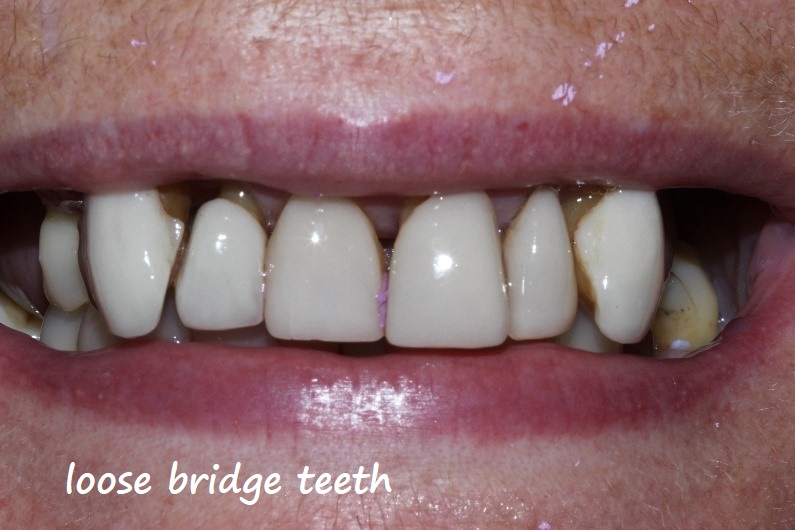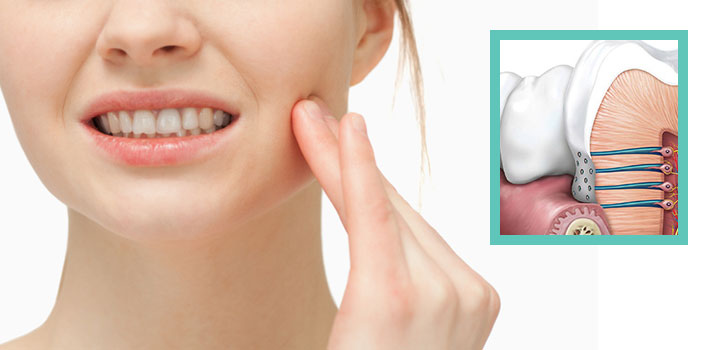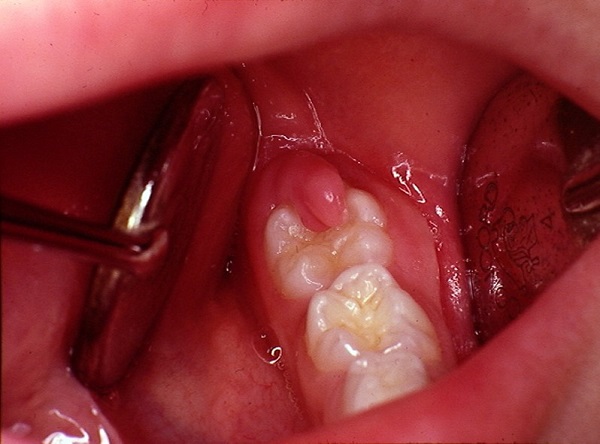Loose bridge teeth

Dental bridges are a common solution for replacing missing teeth. They function by bridging the gap between two healthy teeth, called abutment teeth, with a false tooth (pontic) in between. While bridges can provide long-term solutions and improve your smile, sometimes they can become loose. This comprehensive guide will explore the causes, symptoms, treatment options, and preventive measures for loose bridge teeth, ensuring you have all the information you need to maintain your dental health.
What is a Dental Bridge?
A dental bridge is a fixed dental restoration that replaces one or more missing teeth by permanently joining an artificial tooth to adjacent teeth or dental implants. Bridges are typically made from materials such as porcelain, gold, alloys, or a combination of these. There are several types of dental bridges, including traditional bridges, cantilever bridges, Maryland bonded bridges, and implant-supported bridges.
Types of Dental Bridges
- Traditional Bridges are the most common type, consisting of a false tooth or teeth held in place by dental crowns cemented onto each abutment tooth.
- Cantilever Bridges: Used when adjacent teeth are on only one side of the missing tooth or teeth.
- Maryland Bonded Bridges: Made of porcelain or porcelain fused to metal, they have wings on each side that are bonded to the existing teeth.
- Implant-Supported Bridges: These use dental implants for support instead of being cemented to natural teeth.
Causes of Loose Bridge Teeth
Several factors can contribute to a dental bridge becoming loose. Understanding these causes can help in preventing and addressing the issue promptly.
1. Poor Oral Hygiene
Neglecting oral hygiene can lead to gum disease and tooth decay, weakening the supporting teeth and cause the bridge to become loose.
2. Wear and Tear
Over time, the materials used in dental bridges can wear down due to normal usage, leading to a loose fit.
3. Dental Decay
Decay in the abutment teeth can undermine the bridge’s stability, causing it to loosen.
4. Gum Disease
Gum disease can cause the gums and bone supporting the bridge to recede, making the bridge less stable.
5. Accidental Trauma
Injury or trauma to the mouth can dislodge or damage a dental bridge, resulting in a loose fit.
6. Poor Fit
A bridge that was not fitted correctly initially might become loose over time due to inadequate support.
Symptoms of a Loose Dental Bridge
Identifying the symptoms of a loose dental bridge early can prevent further complications. Common signs include:
- Movement: Feeling the bridge move when eating or touching it with your tongue.
- Pain or Discomfort: Experiencing pain around the bridge area, especially when biting or chewing.
- Sensitivity: Increased sensitivity to hot or cold foods and beverages.
- Visible Gaps: Noticing gaps between the bridge and your gums or surrounding teeth.
- Bad Breath: Persistent bad breath or a foul taste in the mouth, which could indicate an infection or decay.
How to Manage a Loose Dental Bridge
If you suspect your dental bridge is loose, addressing the issue promptly is essential to avoid further damage or complications. Here’s what you can do:
1. Schedule a Dental Appointment
The first step is to schedule an appointment with your dentist. They can assess the situation and determine the cause of the looseness.
2. Avoid Hard Foods
Until you can see your dentist, avoid hard or sticky foods that could further dislodge the bridge or cause additional damage.
3. Maintain Oral Hygiene
Continue to brush and floss your teeth gently to maintain oral hygiene and prevent further complications.
4. Use Dental Adhesive
Sometimes, using a temporary dental adhesive can help keep the bridge in place until you can visit your dentist.
Treatment Options for Loose Bridge Teeth
The treatment for a loose dental bridge depends on the underlying cause. Here are some common solutions:
1. Recementing the Bridge
If the bridge is loose but the abutment teeth are healthy, your dentist may simply need to clean the bridge and the abutment teeth and keep the bridge in place.
2. Replacing the Bridge
If the bridge is damaged or the abutment teeth are decayed, your dentist may recommend replacing the bridge. This involves removing the old bridge, treating any underlying issues, and fitting a new bridge.
3. Treating Gum Disease
If gum disease is the cause of the looseness, treating the gum disease is crucial. This might involve deep cleaning, scaling root planing, and other periodontal treatments.
4. Addressing Tooth Decay
If decay in the abutment teeth is causing the bridge to become loose, treating the decay is essential. This might involve filling cavities, performing root canals, or other restorative treatments before refitting the bridge.
5. Dental Implants
In cases where the abutment teeth cannot be salvaged, dental implants might be a better option. Implants provide a stable and long-lasting solution for replacing missing teeth and supporting bridges.
Preventing Loose Bridge Teeth
Preventing a dental bridge from becoming loose involves good oral hygiene and regular dental care. Here are some tips to help you maintain a secure dental bridge:
1. Brush and Floss Daily
Brush your teeth at least twice daily and floss daily to remove plaque and food particles that can cause decay and gum disease.
2. Use an Antibacterial Mouthwash
Using an antibacterial mouthwash can help reduce the risk of infection and keep your gums healthy.
3. Avoid Hard and Sticky Foods
Limit your consumption of hard and sticky foods that can damage your bridge or cause it to become loose.
4. Visit Your Dentist Regularly
Regular dental check-ups and cleanings are crucial for maintaining your dental bridge and overall oral health. Your dentist can identify potential issues early and provide appropriate treatment.
5. Wear a Mouthguard
If you participate in sports or grind your teeth at night, wearing a mouthguard can protect your bridge from damage.
FAQs About Loose Dental Bridges
1. How long do dental bridges last?
Dental bridges can last between 5 to 15 years or longer with proper care and maintenance. Regular dental visits and good oral hygiene practices are essential for the longevity of your bridge.
2. Can a loose dental bridge be fixed?
Yes, a loose dental bridge can often be fixed. The treatment depends on the cause of the looseness. Your dentist can assess the situation and recommend the appropriate solution.
3. Is a loose dental bridge an emergency?
While a loose dental bridge is not always an emergency, scheduling a dental appointment as soon as possible is essential to prevent further damage or complications.
4. How much does it cost to repair a loose dental bridge?
The cost of repairing a loose dental bridge varies depending on the cause of the looseness and the necessary treatment. It’s best to consult with your dentist for an accurate estimate.
5. Can I re-cement my dental bridge at home?
It’s not recommended to re-cement your dental bridge at home. Dental cement is not a long-term solution and can lead to further complications. It’s best to see your dentist for proper treatment.
Conclusion
A loose dental bridge can cause concern, but it can often be resolved effectively with prompt attention and proper care. Understanding the causes, symptoms, and treatment options for loose bridge teeth can help you maintain your dental health and ensure the longevity of your dental bridge. Regular dental visits, good oral hygiene practices, and being mindful of what you eat are key to preventing and managing loose dental bridges.
If you suspect your dental bridge is loose, don’t hesitate to contact your dentist. They can provide the necessary care and guidance to restore your smile and keep your dental health on track.
Related to read:
Best Oral Hygiene Practices For Optimum Oral Health.
How to Whiten Teeth Naturally?
How to keep your gums healthy and disease-free?
References
To ensure the information provided is accurate and up-to-date, the following sources were referenced:
- American Dental Association. (n.d.). Plaque and Tartar. Retrieved from ADA website
- Mayo Clinic. (n.d.). Dental Plaque. Retrieved from Mayo Clinic website
- National Institute of Dental and Craniofacial Research. (n.d.). Periodontal (Gum) Disease. Retrieved from NIDCR website









